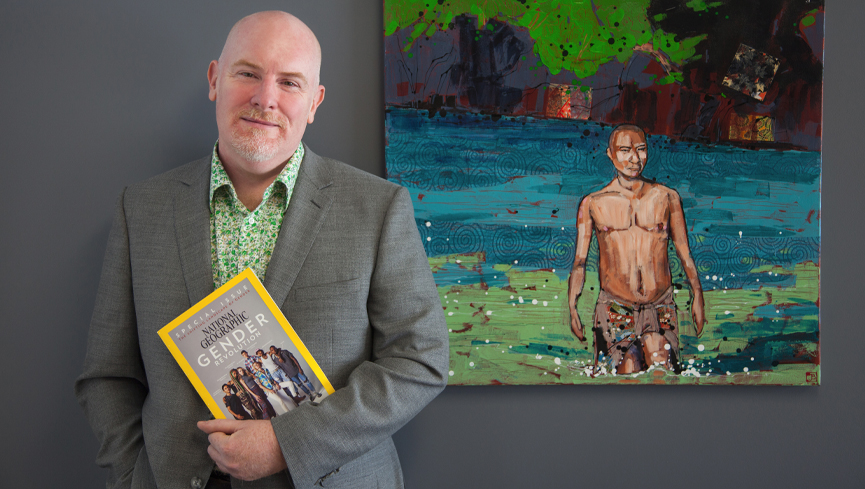A deeper analysis of a decade’s worth of data from Dr. Paul Vasey’s Comparative Sexology Lab at the University of Lethbridge has lent clarity about the influence of two separate but linked literatures on biological variables influencing male homosexuality.

Vasey, a Professor and Board of Governors Research Chair, and his team of former students (Drs. Doug VanderLaan, Scott Semenyna and Francisco Goméz Jiménez) wanted to determine if there was evidence for both the Fraternal Birth Order Effect (FBOE) and the Female Fecundity Effect (FFE) in data they collected over a decade while working in Samoa.
The FBOE is a widely established finding that each biological older brother a male has increases the probability of homosexuality in that male by 20 to 35 per cent.
The FFE suggests that the female relatives of homosexual males have more children than those of heterosexual males, which provides an evolutionary means to offset the lower reproduction rate of homosexual male relatives. Previous research has also shown support for this hypothesis.
“More recently, people have been saying we need to use different statistical approaches when assessing the FFE that control for the FBOE,” says Vasey. “In order to see if there’s truly a fecundity effect that is occurring, we should see more children in all sibling categories including older sisters, older brothers, younger sisters and younger brothers. In contrast, the FBOE specifically predicts the existence of more older brothers.”
Vasey and his students collected data in the Polynesian island nation of Samoa over a 10-year period working with the support of the fa’afafine community. Fa’afafine are feminine, same-sex attracted males who are recognized as a third gender (neither men nor women) in Samoa.
The team subjected their data to a more robust analysis to determine whether the FBOE occurred in conjunction with the FFE.
“We didn’t find a generalized fecundity effect that influenced all sibling categories,” says Vasey. “We did, however, find that fa’afafine had more older brothers, which is consistent with the fraternal birth order effect.”
Vasey adds that the team’s analysis using a more refined approach is now the fourth to find no evidence for the FFE.
“What we originally thought was support for the FFE was actually just the fraternal birth order effect,” Vasey says. “Without my Board of Governor’s Research Chair, I never would have been able to conduct a decade of fieldwork in Samoa. I’m extremely grateful to the University of Lethbridge for awarding me my BoG Research Chair and for all the support I have been shown over the years.”
The study was funded by the Natural Sciences and Engineering Research Council of Canada (NSERC) and has been published in the prestigious journal, Proceedings of the National Academy of Science (PNAS).
The Research Support Fund supports a portion of the costs associated with managing the research funded by the Canadian Institutes of Health Research, Natural Sciences and Engineering Research Council and Social Sciences and Humanities Research Council, such as salaries for staff who provide administration support, training costs for workplace health and safety, maintenance of libraries and laboratories, and administrative costs associated with obtaining patents for inventions.
